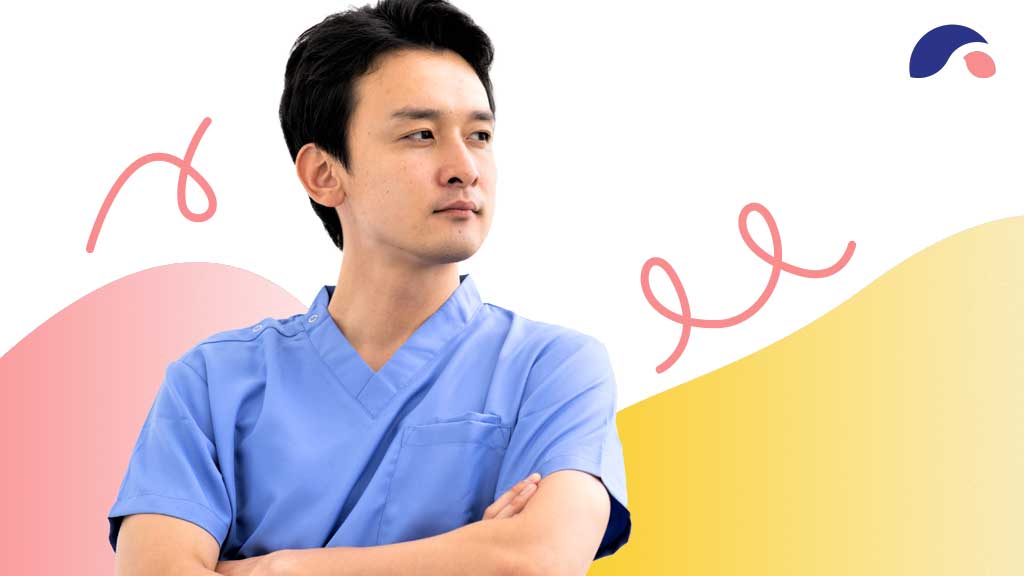Critical reflection is a valuable tool that nurse educators can teach to healthcare workers, assisting them to better process the many stressful workplace events that may erode confidence and lead to moral distress.
Have you ever taken the opportunity to critically reflect on something that occurred in a clinical setting or classroom? Did you ponder what you did well? Or, did you focus on what you could have done better if you had responded differently?
There are two main types of reflection:
- Reflection-on-action
- Reflection-in-action.
While reflection-on-action occurs after a situation has transpired, reflection-in-action occurs during a situation, or ‘on-the-spot’ (La Trobe University 2020).
With this in mind, consider the following scenario:
A Breach of Professionalism: Reflection-on-Action
Helen is a registered nurse with more than 10 years of experience. She typically works from 7:00 pm to 7:00 am.
One evening, Helen enters a patient’s room to let him know that she will be providing care for him throughout the night. She notices that his abdominal wound has saturated through the sterile dressing, which is now heavily stained with serous-sanguineous drainage. Helen informs the patient that she is going to find Amy, his day nurse, and return very shortly to provide wound care. Helen exits the patient’s room angry and concerned that Amy had neglected this patient’s care needs. Helen seeks Amy out at the nurse’s station and states:
“What’s your problem? You’ve been working on this unit for years, yet you can’t prioritise your patient’s care needs and provide him with necessary wound care. It’s a good thing you don’t work my shift!”
Amy is so taken aback by Helen’s comment that she leaves the area, embarrassed and frustrated. She neglects to inform Helen that she had intended to complete the patient’s wound care but was called to the emergency room to assist in providing trauma care for multiple victims of a motor vehicle accident. On her drive home, Amy reflects upon the decisions she made that day and if she could have done better by her patient and by Helen. Amy’s feelings of moral distress increase the more she ruminates.
Amy’s reflection during her drive home is an example of reflection-on-action (Schȍn 1983) - a process that provides healthcare professionals with an opportunity to reconsider an event and reflect upon how a different approach may have led to a different and more satisfying outcome.

Now, let’s consider the possible benefits Amy may have experienced if she had used reflection-in-action to transform the incident ‘in the moment’ and turn the conversation in a different direction.
A Breach of Professionalism: Reflection-in-Action
… Helen enters a patient’s room to let him know that she will be providing care for him throughout the night. She notices that his abdominal wound has saturated through the sterile dressing, which is now heavily stained with serous-sanguineous drainage. Helen informs the patient that she is going to find Amy, his day nurse, and return very shortly to provide wound care. Helen exits the patient’s room angry and concerned that Amy had neglected this patient’s care needs. Helen seeks Amy out at the nurse’s station.
Amy, arriving back to her station from having just finished assisting with a trauma-emergency, sees Helen approaching. Amy can see she is visibly disgruntled.
Amy is already mentally exhausted from her shift and is tempted to give up for the night, however, she recognises this as an important moment of action.
Drawing a deep breath, Amy takes the initiative to approach Helen first. She states:
“Helen! I am so sorry for the delay in our patient’s wound care. I was called to assist with a multi-victim trauma emergency one hour ago and have only just got back. I’ve already explained and apologised to the patient for the delay and am on my way in to change the dressing now before I clock-off. I am not in the habit of giving my shift report until all of my patient’s needs have been met, which is the reason for any miscommunication. Once I’m done I’m happy to prepare a comprehensive report for you.”
The second version of the scenario highlights the enormous power of reflection-in-action (Schȍn, 1983), which allowed Amy to spontaneously turn the conversation in a more productive direction.
Although Amy was mentally exhausted and tempted to ignore her colleague’s comments, or perhaps respond in a defensive or angry tone, she took a moment to think and acted professionally and thoughtfully.
Schȍn’s Reflection
Schȍn (1987, pp. 26-29), identifies four stages of reflection-in-action. These are:
- Routinised action
- Encounter of surprise
- Reflection
- New action.
These four stages illustrate how a routine task, such as communicating with a patient or colleague, can often evolve into a chance to reflect and experiment with your responses.
Consider a time in your own practice where a surprising encounter occurred during a routine interaction.
Bedside nursing and caregiving often consists of a series of these interactions requiring improvised responses. For example, critical thinking in the midst of providing a care action; engaging in an activity while simultaneously reshaping it.
Developing the skills of reflection-in-action allows healthcare professionals to work like this, encouraging new insights and a spread of confidence that may inspire a culture of organisational learning, and ultimately, the potential to impact patient care outcomes.

How the Nurse Educator Can Inspire Reflection-in-Action
The following strategies can be used to will empower you and your staff to display reflection-in-action by beginning with reflection-on-action:
- Begin by posting signs announcing a ‘Campaign of Reflection’.
- Create at least 10 patient care situations that staff in your workplace may be confronted with on a daily basis.
- Schedule 30 to 45 minutes of time during a regular staff meeting for staff to role-play each of these 10 situations, then reflect on how they could have handled them differently. Once staff have engaged in this reflection-on-action, ask them to keep a journal for the next month. The purpose of this is for them to take a step back during stressful situations in a typical workday in order to reflect. Each time staff are confronted by a stressful situation, ask them to journal and respond to the following questions:
- How did you manage the situation?
- Are you pleased with the outcome?
- Were you able to engage in reflection-in-action at the time of the incident? If yes, how did you feel? If not, what were the barriers that you encountered? What strategies could you utilise to break down those barriers?
- How will you use reflection-in-action to enhance your nursing practice?
Conclusion
Reflective practice is not a cure to all stressful situations. Instead, it’s a tool and strategy that allows healthcare professionals to acknowledge their personal power and be prepared for surprises and stressful situations.
Being prepared for the unexpected is an essential part of working in healthcare, and honing our reflection-in-action skills allows healthcare professionals to be equipped with the tools needed to rapidly strategise and respond during stressful encounters.
The ultimate goal of this approach is to manage situations while they are occurring, and therefore, enhance professional confidence and understanding.
References
- La Trobe University 2020, Types of Reflection, La Trobe University, viewed 2 June 2021, https://latrobe.libguides.com/reflectivepractice/types
- Schȍn, D A 1983, The Reflective Practitioner: How Professionals Think in Action, Basic Books, New York.
- Schȍn, D A 1987, Educating the Reflective Practitioner, Jossey-Bass, San Francisco, CA.
 New
New 
